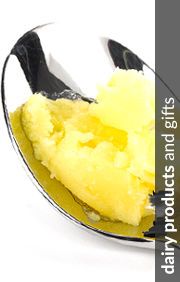Detecting cheese defects and quality – on the cheese dough Recognizing cheese defects requires some practice. A good dough texture in cheese is significantly influenced by the water and fat content. The cheesemaker therefore needs to pay close attention to the processing milk in order to keep the quality. To make matters worse, the composition […]
Red culture bacteria for the spicy cheese taste Bacterium Linens (red culture bacteria) are brushed with salt water on the cheese. The red culture gives the cheese a yellow-orange rind and a spicy taste. Just a tiny amount is enough to give the cheese its distinctive scent. The bacterium feeds on the protein of the […]
Cheese loves the cellar and high humidity The alpine cheese is best located in a cellar with high humidity. In the cellar, storage in a cheese box made of natural, untreated wood is always recommended. If cared for properly, it can last a long time. The older the cheese gets, the easier it will be. […]
Buying cheese in the online shop – online shopping for cheese – a contemporary trend Online shopping has become an indispensable part of our daily lives. Now that many people have learned how to access products such as radios, kitchen equipment, shoes and even cars via the internet, the next trend is already announcing. The […]
Vaccination – a process in cheese production In vaccination, the milk is mixed with starter cultures (lactic acid bacteria, mold cultures). By inoculating with sour milk bacteria or by adding an animal rennet, the milk is made to clot. As a result, it is thickened in the jargon. Only through a specific combination of the […]
Thickening the milk The milk is pre-acidified and thickened with the help of the rennet (calf rennet, microbial labs of bacteria or pepsin). The milk coagulates and a firmer mass forms. The “stacked mass” that has curdled through the lab is called jelly. This is cut by the artisan cheese maker to the desired fraction […]
The abbreviation F.D.M. – fat content of the cheese This information is a reference information on each cheese. The dry matter refers to that portion of the cheese that remains after removal of the water contained. The more water is removed from the cheese, the lower its dry matter and vice versa. Thus, the F.D.M. […]
EU protection of regional cheese specialties Protection of origin or protection of origin are statutory regulations. They ensure that a particular product can only be designated by its name if it comes from a specific area and complies with the rules of manufacture, composition and characteristics specified therein. Cheese specialties are a cultural value Cheese […]
The enzymes chymosin and pepsin Enzymes are special proteins (biocatalysts) formed in living cells (lab) that accelerate the biochemical conversion of milk. What is rennet anyway? Animal rennet in powder for cheese production. Lab is, as already mentioned, a mixture of the enzymes chymosin and pepsin and is obtained from the abomasum of young ruminants. As […]




















